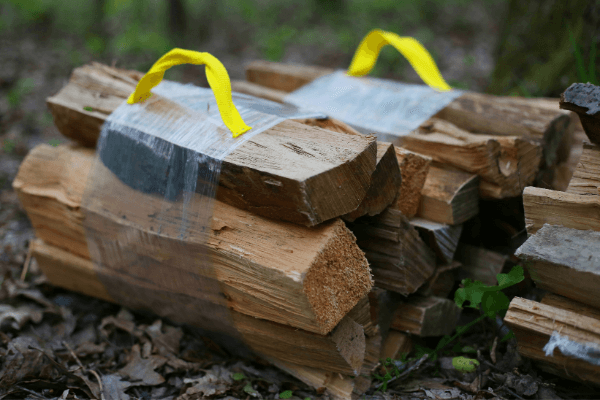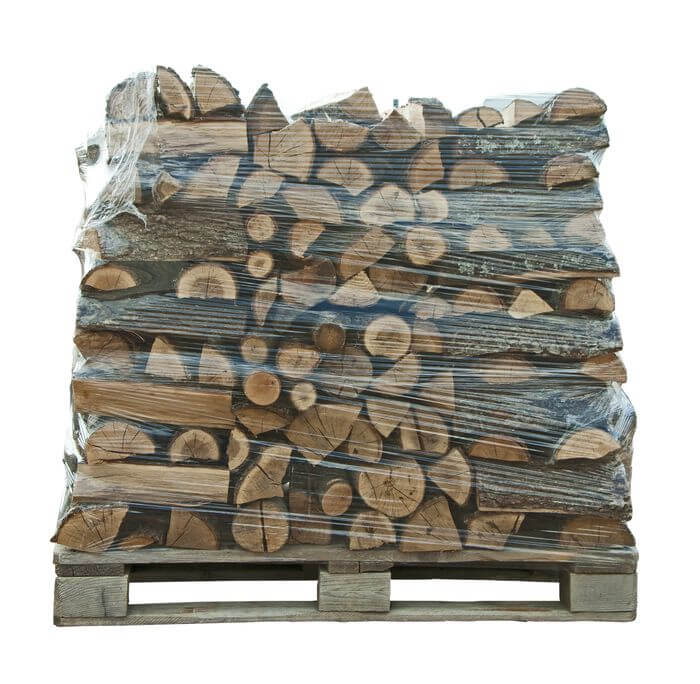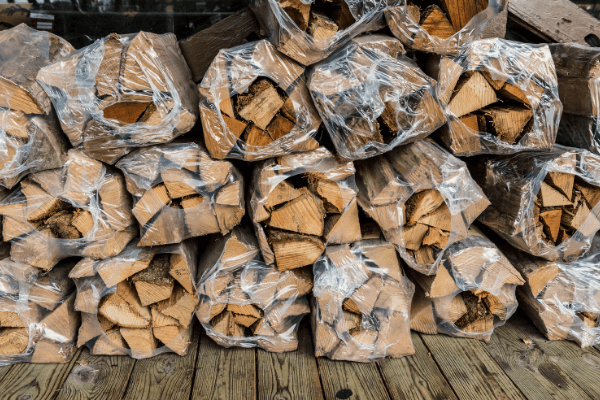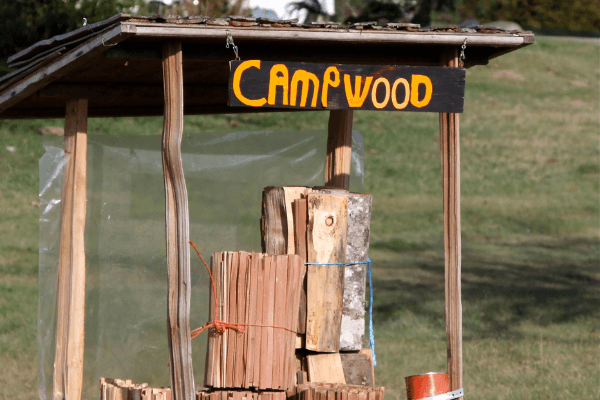- Home
- Selling Firewood
- Firewood Shrink Wrap
Firewood Shrink Wrap
This post may contain affiliate links so I earn a commission.
Using firewood shrink wrap is an excellent way to package firewood for retail sales.
Why would you want to shrink wrap firewood?
Many firewood distributors are quickly realizing that firewood sold in small bundles leads to much larger profits.
Shrink wrap is used to securely wrap the firewood, which allows the customer to easily move it without creating a mess.
The small bundles are portable and easy to load into your vehicle and take to your destination.

Some distributors use binder twine, plastic packaging straps, or even burlap bags to secure the bundles.
This method will work, but it takes time.
The time spent can really add up when you're wrapping thousands of bundles.
Your Shrink Wrap Options
The term shrink wrap generally describes two different methods of wrapping firewood.
One method uses heat to shrink the plastic wrap around a bundle of wood.
The plastic is applied to the wood, and when heat is introduced, the plastic constricts, forming a tight barrier around the wood.
Large pallets of wood are often shrink-wrapped with heat before transport.
The large pallets can quickly be wrapped, and it keeps moisture off the wood and secures the wood for transport.
It's important not to completely seal off the firewood, especially if it's green.
It's a good practice to only wrap seasoned firewood while keeping the ends exposed to increase airflow and allow moisture to escape.
The other style of shrink wrap does not use heat.
The shrink wrap (also called plastic wrap) is used in conjunction with a firewood bundler.

Once the firewood is loaded into the bundler, the machine tightly wraps the firewood creating a nice neat bundle.
The firewood bundlers can be powered by a hand crank or a motor, depending on the style you choose.
The three main wraps used in firewood shrink wraps are polyolefin (POF), polyethylene (PE), and polyvinyl chloride (PVC).
Each one of them has different characteristics and capabilities that make them suitable for specific applications.
Each of these wraps can be squeezed into multilayer wraps with various additives, providing specific barrier properties needed for appearance or shelf life.
Shrink wraps form tamper-resistant protection to packaged goods.
If you are not sure that you are using the right wrap, here is an overview of the three.
POF Shrink Wrap
Polyolefin is a very versatile and durable material.
It is an FDA-approved material for food packaging.
It provides excellent clarity for speed packaging applications and high tensile strength.
It provides the ability to create longer wrap rolls with finer gauges that allow for increased productivity and efficiency and less roll change-over.
The wraps have exceptional puncture resistance and fastening strength, allowing irregular-shaped firewood to have outstanding protection.

The flexibility and fairly low prices that POF wraps
offer make them suitable for many applications.
In some cases, POF will require perforations added to your wrap.
Small holes added to the wrap before use allows air to escape during the shrinking process for an even package.
Pre-perforated POF shrink wraps are available for this reason.
PE Shrink Wrap
Polyethylene is a single monomer shrink wrap that is ideal for various forms of flexible protective packaging.
It provides excellent strength and durability for heavy, large items.
The wraps are printable and can have exceptional graphics added while still maintaining the strength and image required.
Where higher gauges are needed, PE is suitable as it can be up to 1200 gauge.
The disadvantage of this type of shrink wrap is that it does not have a high shrink rate.
It also has significantly lower clarity compared to other wraps.
PVC Shrink Wrap
PVC is the most commonly used type of shrink packaging material due to its light weight and low cost.
PVC is strong and very durable for rigid applications.
It is recommended for use in well-ventilated places due to the strong, dangerous odors it produces when heated.
Because of its chemical composition and harmful byproducts during its decomposition and creation, PVC has been banned in some countries. So, it is crucial that check your local laws before deciding to use PVC as a firewood shrink wrap.
PVC is temperamental with cold or hot temperatures, causing wrinkling when too warm and brittleness when too cold.
If you use a PVC firewood shrink wrap, it is
crucial that you ensure the highest possible measures for use and disposal.
Firewood Shrink Wrap - Overall
If you're interested in bundling your own firewood, compare the different options and see which one works best for you.
Understanding your options can help you save money in the long run.

It is best to look for a supplier who can answer any
questions that you might have regarding the best type of wrap.
The right supplier can also help you with custom shrink wrap solutions that match your specific needs for visual presentation, protection, and efficiency.
Bundled firewood is becoming very popular.
If you have the desire to start your own firewood business, one of these machines might give you the opportunity to make some decent money.
By using the information above, you will have the knowledge you need to make the right choice regarding the best firewood shrink wrap for you.

About the Author
Obsessed with firewood, Nick is behind over 350+ of Firewood For Life's articles, as well as countless reviews, guides and YouTube videos to help readers like you reduce heating costs and create the perfect fire.


